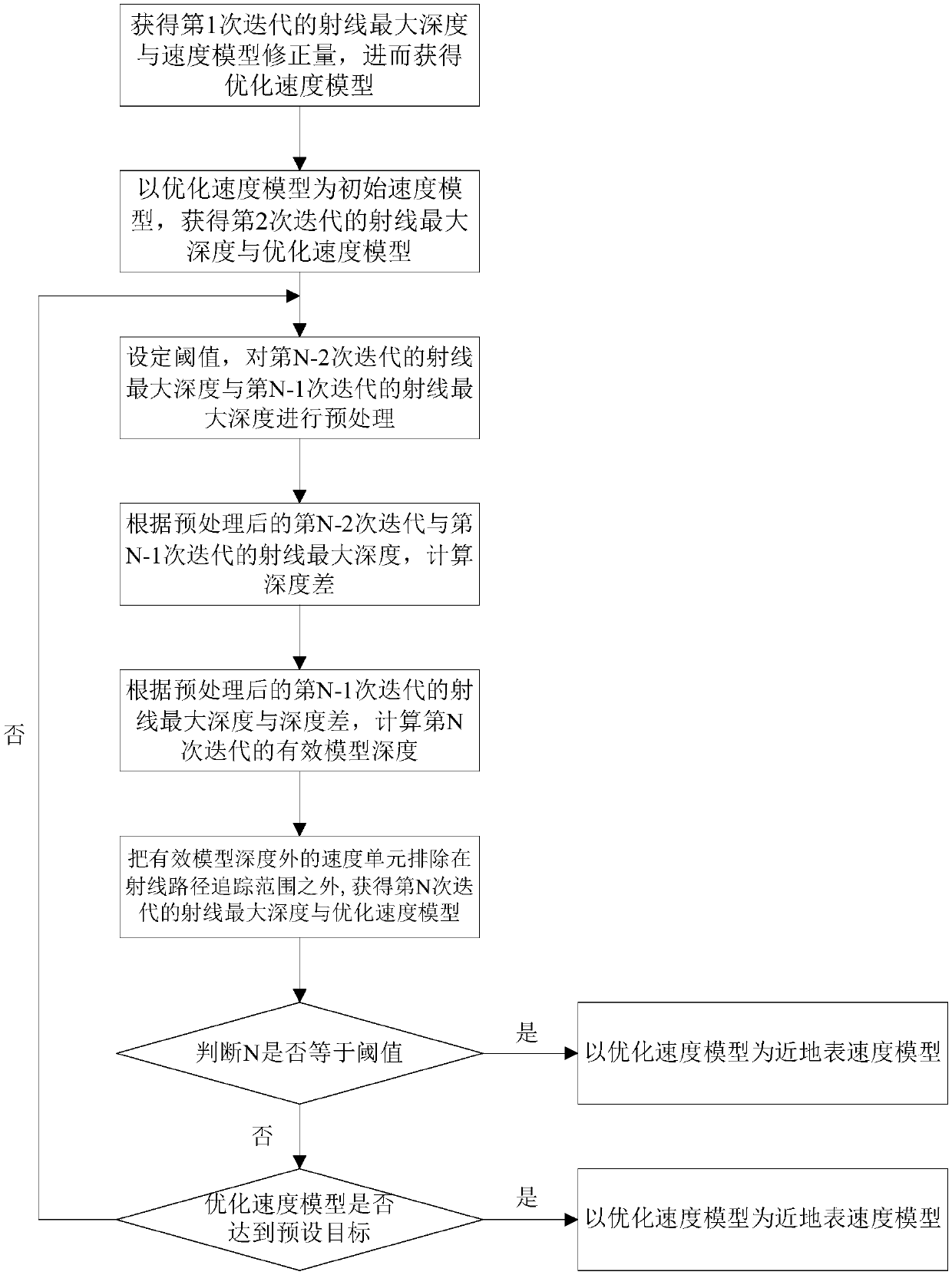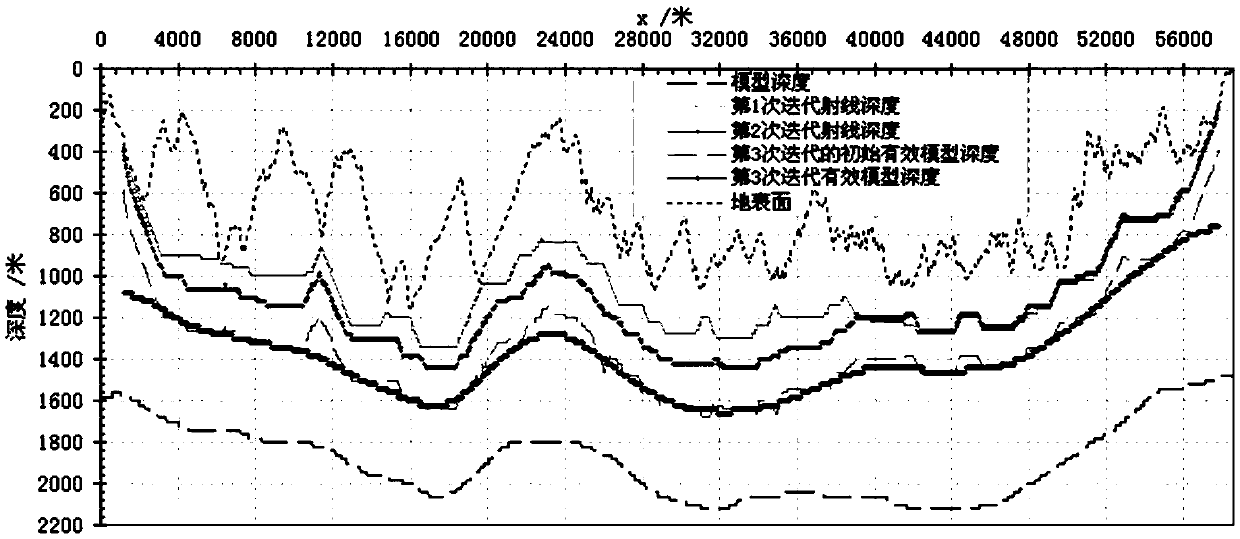First arrival chromatography near-surface modeling effective model depth control method and system
A depth control, near-surface technology, applied in the field of seismic exploration data data processing, which can solve the problems of wrong ray tracing results, cost, multi-CPU computing time, etc.
- Summary
- Abstract
- Description
- Claims
- Application Information
AI Technical Summary
Problems solved by technology
Method used
Image
Examples
Embodiment Construction
[0036] The present invention will be described in more detail below with reference to the accompanying drawings. Although preferred embodiments of the invention are shown in the drawings, it should be understood that the invention may be embodied in various forms and should not be limited to the embodiments set forth herein. Rather, these embodiments are provided so that this disclosure will be thorough and complete, and will fully convey the scope of the invention to those skilled in the art.
[0037] figure 1 A flowchart showing the steps of an effective model depth control method for first-arrival tomographic near-surface modeling according to the present invention.
[0038] In this embodiment, the effective model depth control method for first-arrival tomography near-surface modeling according to the present invention may include: performing forward modeling and inversion of first-arrival tomography according to the initial velocity model, and obtaining the rays of the fi...
PUM
 Login to View More
Login to View More Abstract
Description
Claims
Application Information
 Login to View More
Login to View More - R&D Engineer
- R&D Manager
- IP Professional
- Industry Leading Data Capabilities
- Powerful AI technology
- Patent DNA Extraction
Browse by: Latest US Patents, China's latest patents, Technical Efficacy Thesaurus, Application Domain, Technology Topic, Popular Technical Reports.
© 2024 PatSnap. All rights reserved.Legal|Privacy policy|Modern Slavery Act Transparency Statement|Sitemap|About US| Contact US: help@patsnap.com










